Audience engagement: What it is and tips to improve it
Table of Contents
Audience engagement is all about the connection your audience feels with your brand and the actions they take as a result of it. In general, audience engagement and social media engagement in particular aren’t easy to come by. Social media users’ feeds are flooded with content competing for their attention.
But when you hit the right chord, you’ll see increased brand health, higher-quality leads and an active social following. In this article, we’ll explore audience engagement benefits and strategies, plus show you shining examples of what audience engagement looks like.
What is audience engagement?
Audience engagement is any measurable interaction between your target audience and your brand across digital channels. This includes likes, comments, shares, clicks, mentions and user-generated content that demonstrates active participation rather than passive consumption.
If your audience doesn’t engage with your brand, it’s a sign that your content does not resonate with them. It’s vital to track audience engagement so you can be sure your content interests the people who matter most to your organization.
Types of audience engagement
Audience engagement on social media takes multiple forms, ranging from low-effort to high-commitment actions:
- Low-effort engagement: Likes, reactions and basic interactions that require minimal time but increase visibility
- Medium-effort engagement: Comments, shares, mentions and reviews that show active interest and conversation
- High-effort engagement: User-generated content, website visits and conversions that demonstrate strong commitment
Likes and reactions
Likes and reactions are one of the simplest ways for an audience to engage with your brand on social media—all your target audience has to do is click or tap a button. But when your audience does so, their followers see it in their feeds, which exponentially increases your brand’s visibility. That’s why likes and reactions are important metrics to consider when analyzing your content performance.
A content platform ForYou, joining a powerful platform For You. #socialmediamanager #socialmediamarketing #contentcreator #contentmarketing
Reviews and mentions
Reviewing or mentioning your brand is more involved than liking or sharing your social media posts. It shows that your audience is actively engaging in a conversation about your brand. They are passionate about what you do and want to tell people about it.
Comments and replies
Similar to reviews and mentions, comments and replies show that your target audience wants to engage in a conversation about you. They converse directly with you by replying to your brand’s posts or comment on another post relevant to your brand. Either way, they’ve got something on their mind and they want to share it with others.
Shares and resharing
Sharing and resharing brand content seems like a simple form of audience engagement. But it’s more complicated than that. When your audience shares or reshares your content, they are taking things a step further than just passively enjoying it.
Website interaction
If your target audience clicks through a link to your website from a social post, it shows they are committed to learning more about your brand. They liked what they saw on social enough to go off-platform and hear what you have to say.
Why is audience engagement important for your content strategy?
Audience engagement matters because your brand doesn’t exist in a vacuum. You won’t have a successful digital marketing strategy or social media strategy without it. Here’s a peek at some of the many ways audience engagement can benefit your brand:
Increase brand loyalty
When your audience engages with your brand, especially more than once, they are more likely to stick around for the long term. Your target audience feels that your brand understands them and their needs, which leads to brand loyalty. An engaged audience will also learn about your brand’s mission, vision and core values and see how they align with their own.
Increase visibility
Social media algorithms reward audience engagement on your social posts by displaying them to more people. It tells the social platform that your content is interesting and that other people will also want to see it. By increasing audience engagement, you also increase visibility for your brand to new audiences.
Gain feedback
Tracking audience engagement supports your efforts to learn how your target audience feels about your brand. If they don’t engage with your content very much, it’s a sign that your posts aren’t relevant to your followers.
But if you see negative comments, it’s time to scan through their feedback to determine what is causing the issue. Social listening tools like Sprout Social support brands in surfacing the big issues, from customer service hold-ups to product defects and more.
Improve user experience
When an audience engages with your brand, they actively engage with you through likes, shares, comments, clicks and more. These actions give you insights to further tailor your content to your audience, creating a better user experience for them.
How to engage an audience
Getting your audience to engage with your content takes time and effort, and begins with your social media marketing strategy. With the right tactics and tools, you’ll be on your way to capturing the hearts and clicks of your target audience. Here is a list of strategies you can use to engage your audience better:
Understand your target audience
The most effective way to engage your audience is to get to know them. Your target audience shares specific characteristics, so a best practice is to look at commonalities within, such as:
- Demographics
- Geography
- Behaviors
- Psychographics
- Buying intent
- Subcultures
- Interests, hobbies and values
This supports you in determining what your audience cares about most, what day-to-day challenges they face and how you can best support them.
Knowing your audience also supports you in determining which social media platforms to focus on. If you want to increase engagement, it’s best to move your resources to the platforms your audience frequents.
Leverage AI and social listening
Social media management tools like Sprout Social support you in conducting sentiment analysis with artificial intelligence so you can review and measure what people are saying about you—and topics related to your brand and industry—across social media.
These insights support marketers and larger teams in understanding what needs to be improved, such as products, price, store locations, customer service or anything else you discover through social listening. This supports you in gaining a competitive edge over the rest of the industry.
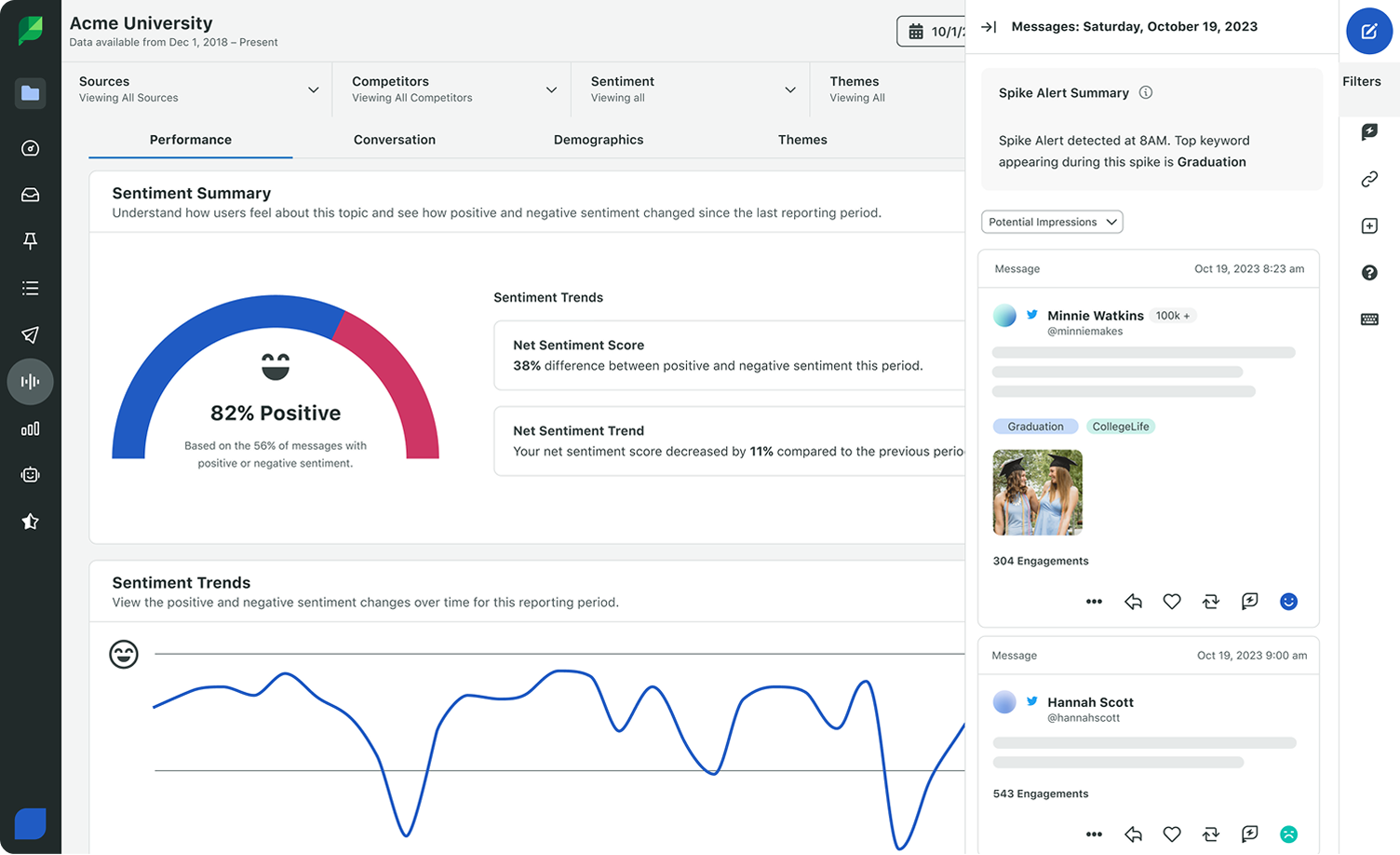
Define the metrics
Success in audience engagement requires tracking the right metrics across different engagement levels:
| Engagement Level | Metrics | What It Measures |
|---|---|---|
| Surface-level | Likes, Reactions | Brand awareness and reach |
| Active engagement | Comments, Shares, Mentions | Content resonance and advocacy |
| Deep engagement | Click-through rate, Time on page, Video views | Intent and interest |
| Business impact | Conversion rate, Video completion rate | ROI and revenue influence |
Track the metrics over time to spot trends or anomalies. For example, you’ll notice when you post about trending topics, your likes and shares go up, and when you plug your product, your comments go down.
The 2025 Content Benchmarks Report is a good resource for understanding how you stack up against industry benchmarks. For example, brands average 14 engagements per post, up from 12 in 2023.
Use modern audience engagement strategies
Successful audience engagement requires staying ahead of rapidly shifting content preferences. Use Sprout Social’s listening tools to track trending topics and content formats that drive engagement in your industry.
Track performance
Tracking performance using specific metrics, as we defined earlier, will also support your efforts to optimize your social media performance.
For example, if you get a lot of comments on your posts but take two days to respond to each one, you’re stopping a conversation.
In this example, Wendy’s social media team does a great job of responding to audience comments, keeping the conversation going:
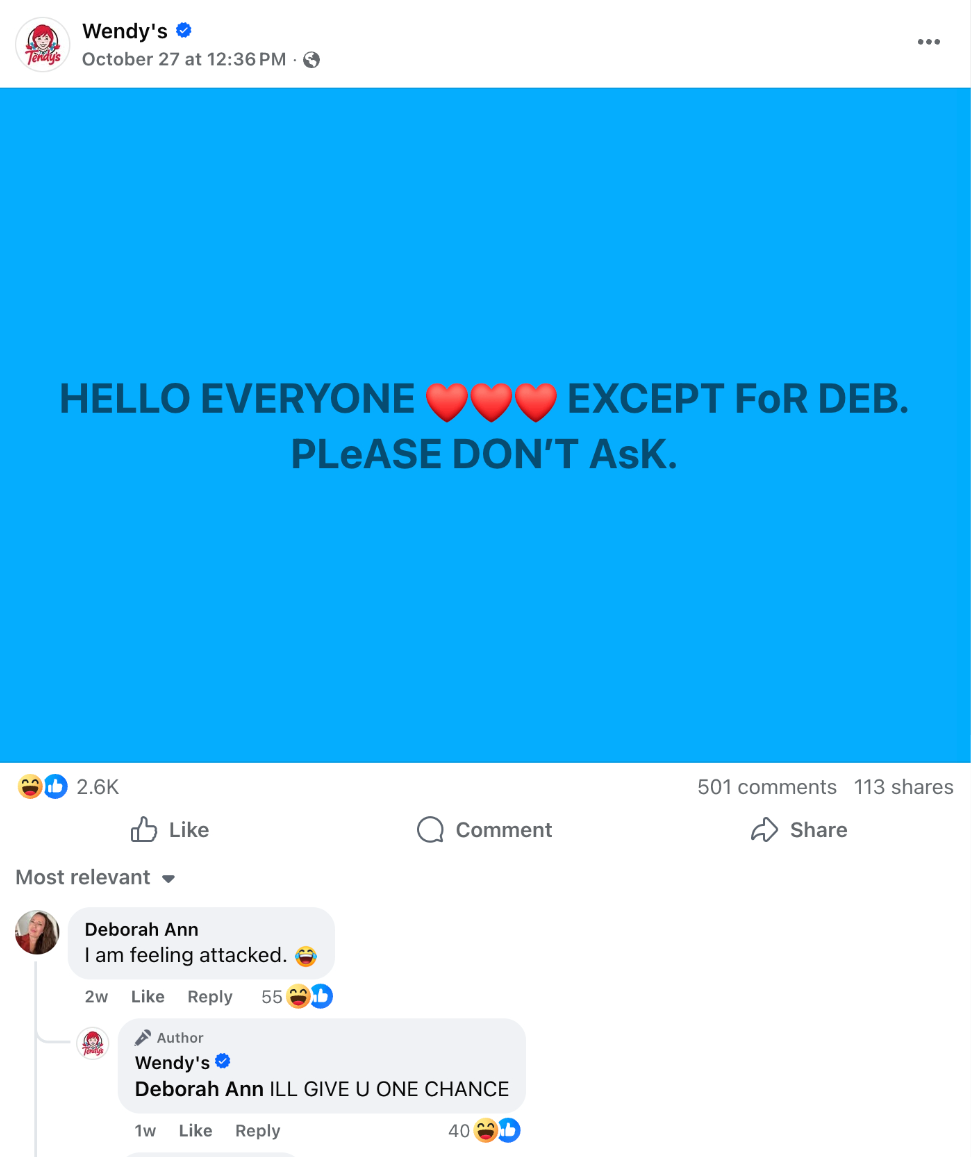
Try A/B testing
Conduct A/B testing to determine what your audience responds to most. Test headlines, subheads, post text, images, post formats, post length, time of day, day of post and more. Ensure you only change one variable at a time.
Modern audience engagement strategies
How do you get your audience to consistently like, share and comment on your social media posts? Here are some of our favorite strategies for you to try.
Use visual storytelling
Users respond more favorably to posts that include visuals like graphics, videos and photos. But it’s not enough to include just any video and image from your library. Curate the visuals so they signal the brand’s identity to your target audience without them ever seeing a logo or brand name.
Chanel’s Instagram account provides an excellent example of visual storytelling. The visuals are so consistent in style that any Chanel fan can spot them as being associated with the brand.

Share personalized content
Social media users don’t react to generic content. They only engage with content that speaks to their hobbies, interests, values and other characteristics. Use attention-grabbing content tailored for specific groups of your audience.
Personalizing content is one of the most effective audience engagement strategies because it shows your audience you understand their needs. In this example, Nike appeals to soccer fans by using a specific hashtag and tailoring the copy and image to soccer players.
Be responsive
Social media is not a one-way communication tool, especially if you want to increase audience engagement. By being responsive to user comments, reviews, shares and other forms of engagement, your brand addresses potential issues, builds relationships with customers and fosters loyalty.
For example, Coca-Cola responds quickly to all user posts about their brand, whether positive or negative, so its audience always feels heard.
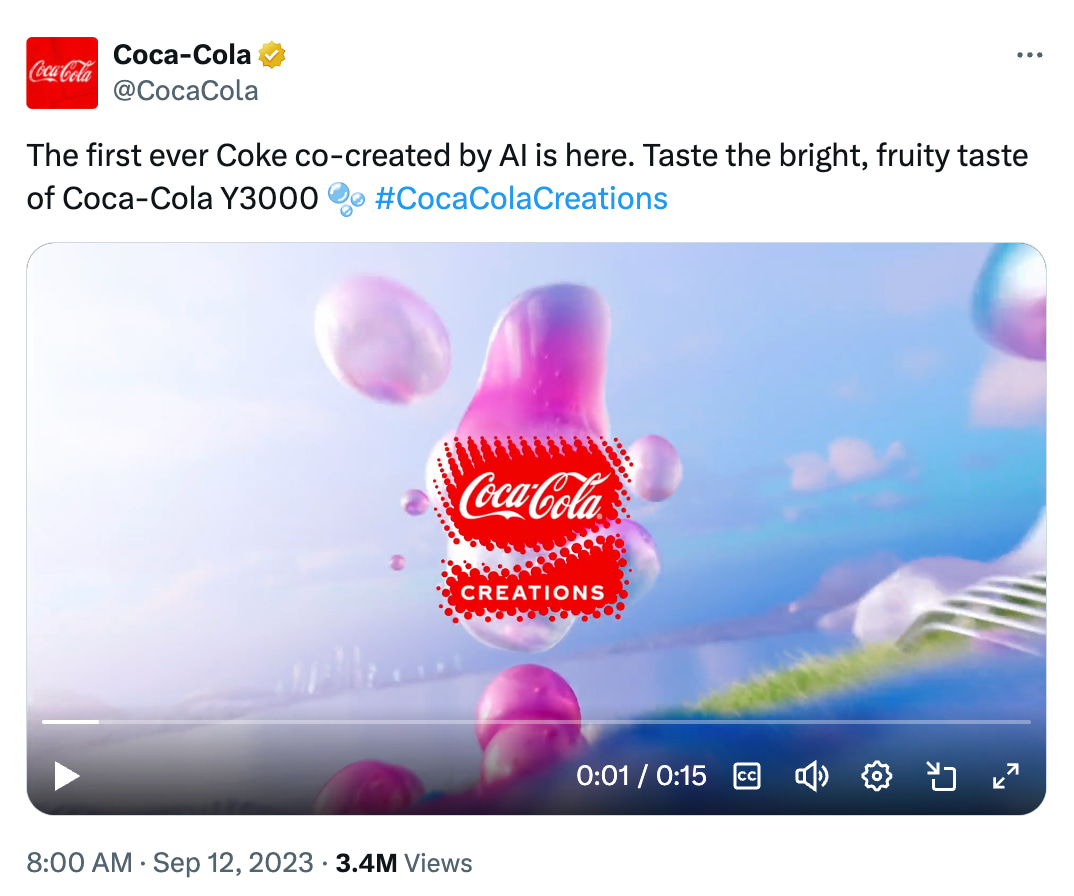
Engage influencers
Influencer marketing is an audience engagement strategy that supports connecting your brand to new audiences who are already highly engaged. Influencers have a dedicated social following of people who trust and value their opinion. If an influencer vouches for your brand, their audience sees this as a form of social proof.
Zoe Sugg is a lifestyle influencer and entrepreneur with 9.2 million followers. She often posts about the products and services she uses in her day-to-day life which are also products that she thinks will appeal to her audience.
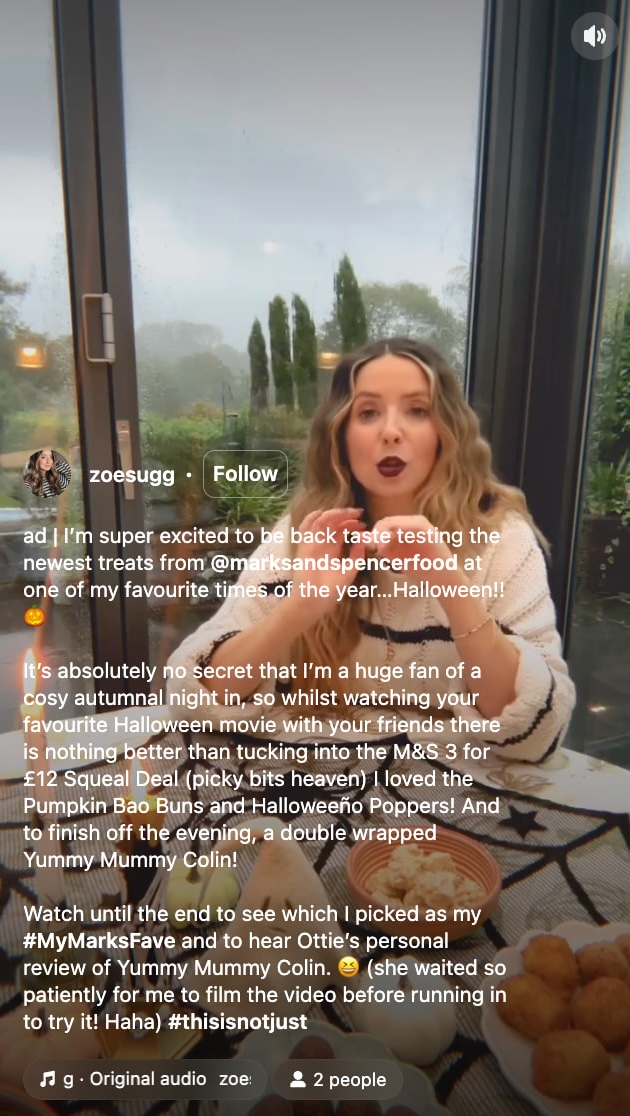
Build a community
Create a place where your target audience gathers online and engages with like-minded people.
For example, The Arboretum, Sprout Social’s online community, serves as a gathering place for 10,000 social and marketing professionals to engage for support, ideas, questions and industry updates.
Leverage user-generated content
What better way to get your audience engaged than by using their content in your social media posts? Try reacting to the original post or resharing the original post. Or, ask users to create content based on a specific prompt and share their content on your social media platforms.
User-generated content makes your audience feel like they are a part of the brand and that they have a platform to share their experiences. For example, Away uses content that customers of the brand have created, making Away’s audience feel special while providing social proof for potential customers.

Include interactive elements
Many social media platforms come with built-in interactive elements, such as quizzes and polls. Ask your audience a question and give them a couple of responses to choose from.
24 Seven Talent makes excellent use of LinkedIn polls because they ask questions related to topics their audience cares deeply about.
Try contests
Sometimes, your audience needs an incentive to engage with your brand on social media. A contest is a great way to offer them a prize for their engagement. Social media contest entries include actions like liking or commenting on a post, tagging a friend or creating a video or photo entry.
Take a look at this post for a giveaway contest from Nuba, which asks followers to enter by completing a number of actions, such as liking the post and tagging their friends. These actions increase visibility for their brand and also increase engagement.
Audience engagement examples
Check out some of the other ways brands get their audiences to engage beyond social media.
Webinars
Webinars are an excellent medium for Q&A sessions. Get your audience involved by asking them questions during the session, and open it up for them to ask questions too. You can also solicit questions from your social media followers to answer during your webinar, and spur excitement about the content you’ll cover.
Social media presence
Make your social media presence unique by establishing a distinct voice, tone and brand personality. If your social media personality aligns with your target audience, they will want to engage with you online.
Check out how Innocent Drinks uses its quirky personality to get its audience engaged by using humor and tying into timely topics unrelated to its products. This creates an authentic social media presence that stands out from other brands.
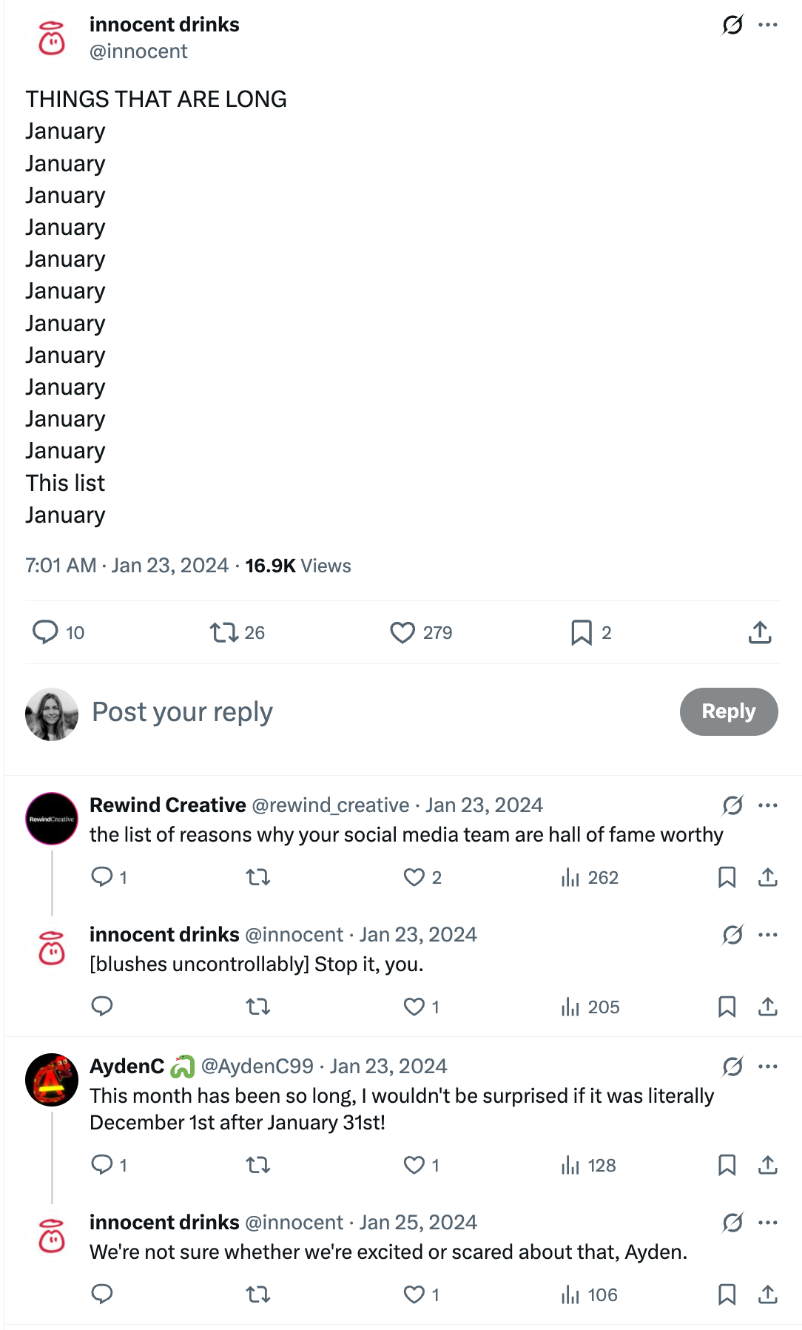
Online reviews
Social proof, which includes reviews and testimonials, supports building trust with your target audience. Ask your customers for reviews after they engage with your brand. Then, share those reviews with prospects to build credibility.
You’ll need an online review management strategy to ensure you maximize the benefits of any reviews. WPX Hosting regularly posts customer reviews on X (formerly known as Twitter) to show potential customers how its audience perceives its products and services.
Conferences and events
If your organization hosts live events, increase engagement online by asking attendees to post during the experience with an event hashtag. Be sure to post event updates and ask followers to join in. The hashtag should be short, unique and memorable.
Apple often uses the #AppleEvent hashtag for its different conferences so fans of the brand can follow along live during the event. The hashtag is used in hundreds of thousands of posts.
Surveys
Surveys and polls provide a range of engagement opportunities. Ask your audience about product or service-related preferences, get their feedback on your customer support offerings or ask a question about the mundane parts of their day.
For example, we use polls at Sprout Social to get customer feedback because we value their opinions and want them to share their thoughts with us.
Measuring audience engagement success
Tracking engagement is one thing. Proving its impact is another. The most successful social teams connect engagement directly to business results using comprehensive analytics platforms.
Key measurement strategies:
- Set clear benchmarks: Compare your performance against industry standards using tools like Sprout Social’s reporting dashboard
- Track conversion paths: Monitor how social engagement drives website traffic and leads
- Calculate ROI: Connect engagement metrics to revenue using attribution modeling
- Create executive reports: Present engagement data alongside business impact metrics
Understanding these benchmarks drives strategic resource allocation across platforms. Sprout Social’s unified analytics dashboard consolidates engagement metrics across social media platforms, revealing which content drives conversions and business impact.
The platform’s Smart Inbox and listening tools support you in responding to engagement opportunities in real-time while tracking long-term performance trends. Ready to transform your engagement strategy?
Get your audience engaged
Whether you want to have better conversations with your followers, improve the quality of your leads or increase overall brand health, increasing your audience engagement will support you in getting there.
While you can get audience engagement on many different marketing channels, social media in particular is a good one to start with because users are naturally inclined to engage on this medium. If you’re having trouble understanding what your audience thinks about your brand, sentiment analysis is the answer.
Transform audience opinions into strategic insights that drive engagement and business growth. Start your free Sprout Social trial to access sentiment analysis, engagement tracking and unified reporting that proves social media ROI.
Frequently asked questions about audience engagement
What is a good audience engagement rate?
Engagement rates vary significantly by platform, industry, audience size and how you calculate them. Use current benchmark reports (e.g., Sprout’s 2025 Content Benchmarks) for your industry as a reference point rather than chasing a single ‘good’ universal rate.
How is audience engagement measured?
Audience engagement is measured through likes, comments, shares, clicks and conversion tracking. Use analytics platforms like Sprout Social to weight these metrics by business value.
How often should I track engagement metrics?
Monitor engagement daily for real-time conversation management, analyze weekly for content optimization and report quarterly for strategic planning. This tiered approach balances tactical responsiveness with long-term strategy.









Share